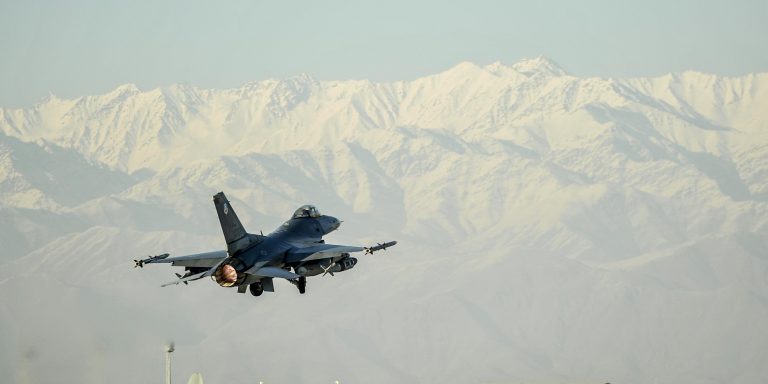INTELBRIEF
August 28, 2018
IntelBrief: The Cycle of Killing the ISIS leader in Afghanistan

- On August 25, 2018, U.S. and Afghan officials stated that a joint airstrike had killed Abu Sayeed Orakzai, the latest head of ISIS-K.
- In April 2018, the U.S. announced the killing of Qari Hekmatullah, described as the ISIS-K leader in northern Afghanistan and an overall key commander for the group.
- In July 2016, U.S. forces killed ISIS-K leader Hafiz Sayed Khan; in May 2017, Abdul Hasib, who replaced Khan, was killed; in July 2017, Abu Sayed, who replaced Hasib, was killed.
- As with al-Qaeda, the tactical successes of repeatedly killing ISIS-K commanders are real but are not enough to change the strategic quagmire.
.
The U.S. is stuck in a familiar pattern: for years after the September 11, 2001 attacks, the U.S. military killed a long line of al-Qaeda ‘number 3’ leaders. This kept pressure on the group—and possibly kept it off balance, at least enough to keep it from committing another spectacular attack against the U.S. Yet overall, even the killing of Usama Bin Laden, an important symbolic and actual military and intelligence accomplishment, has done little to counter the group’s status as a world-wide symbol of global jihad and as a specific threat to Afghanistan and the tribal areas of Pakistan. The war of attrition inevitably favors the locals, and the underlying and aggravating issues that allow groups like al-Qaeda to persist in Afghanistan are not improving.
Now the U.S. is the position of trying to keep the Islamic State in Afghanistan/Khorasan(ISIS-K) off balance through periodic ‘decapitation strikes’ at leadership ranks that show no signs of thinning out. On August 25, the U.S. confirmed it had killed Abu Sayeed Orakzai,the head of ISIS-K. The strike was in Nangarhar province, the same province that saw previous strikes at high-level ISIS-K leaders. The latest strike will certainly create some temporary disruption within part of ISIS-K, especially if it creates doubts about a perceived or real intelligence source collaborating with the enemy from within the group. But overall, the trend of killing ISIS-K leaders and top commanders has not significantly degraded the group. Its conflict with the Taliban, and not the joint U.S.-Afghan strikes, is the most significant obstacle to its growth.
In April 2018, the U.S. announced the killing of Qari Hekmatullah, described as the ISIS-K leader in northern Afghanistan and an overall key commander for the group. It had been hoped that his death would put ISIS-K back on its heels but any such pressure on the group was, inevitably, short-lived. The tactically important killing of ISIS-K leader Hafiz Sayed Khan in July 2016, again in Nangarhar province, did not result in any strategic diminishment of the group. Pentagon deputy press secretary Gordon Trowbridge said on August 12, 2016 that ’Khan's death affects ISIL-K recruiting efforts and will disrupt ISIL-K's operations in Afghanistan and the region,’ which was true in terms of a temporary disruption of a seemingly permanent threat.
In April 2017, nine months after the killing of Hafiz Sayed Khan, a joint U.S.-Afghan raid killed his replacement, Abdul Hasib, again in Nagarhar province. Three months later, Abu Sayed, who replaced Abdul Hasib, was a killed in Kunar province. Pentagon spokesperson Dana White stated that the killing of Abu Sayed ‘will significantly disrupt the terror group’s plans to expand its presence in Afghanistan.’
The U.S. has for years said the strikes against ISIS-K were to prevent the group from ‘getting a foothold’ in Afghanistan, yet the group has been there since at least 2015. It has more than a foothold—even if that foothold pales in comparison to the strength and territorial threat of the Taliban. Using the Taliban as a comparison is an inaccurate way to measure the group; al-Qaeda is a more accurate measure and by that measure, the war of attrition against ISIS-K top leaders will likely have the same results. The group will persist to be a threat that the current strategy in Afghanistan is unable to truly counter. The U.S. is in a second ongoing Afghan war of leadership attrition against a terrorist group with more than sufficient local support and recruitment.
.
For tailored research and analysis, please contact: info@thesoufancenter.org
[video width="960" height="540" mp4="https://thesoufancenter.org/wp-content/uploads/2018/08/IB-0828.mp4" poster="https://thesoufancenter.org/wp-content/uploads/2018/08/160201-F-EB935-010.jpg"][/video]